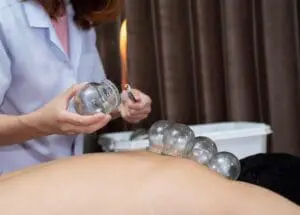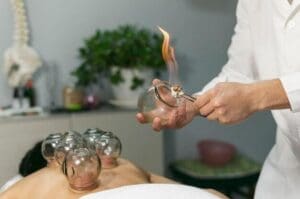Ankle Injury Case study
Introduction
Ankle injury is thought to be only a sports injury, but simply walking on an uneven surface can cause this. Unlike most injuries a high ankle sprain can cause a person to be in recovery for a longer period of time due to the anatomy. The ankle injury is considered the worst injury due to its long recovery time. The ankle is made of 3 bones tibia fibula and talus. The bones act together to sustain a load 3 times a person’s body weight. The soft tissue and and ligaments that surround the ankle allow for stability and motion
Assessment
Common cause of injury can be a fall that causes the ankle to twist. Usually occurs due to inversion of foot which means the foot rolls underneath ankle or leg lateral side. Landing awkwardly on your foot after jumping or pivoting. Sports that require rolling or twisting your foot, such as basketball, tennis, football, soccer and running, can make you vulnerable to spraining your ankle. Some common forms of ankle injuries include shin splints, achilles tendonitis, plantar fasciitis and ankle spain. Ligaments involved include anterior talofibular ligament, the calcaneofibular ligament and posterior talofibular ligament. Muscles included are tibialis anterior origin at the lateral condyle of tibia and insertion at medial cuneiform. Peroneus longus origin at the head of the fibula insertion at the base of the first metatarsal. Extensor digitorum longus origin at the lateral condyle of tibia and insertion at middle and distal phalanges.
The injuries can range from Grade 1 which is stretching and slight tearing of the ligament with mild tenderness, swelling, and stiffness. The ankle feels stable, and it is usually possible to walk with minimal pain. Grade 2 is a larger but incomplete tear with moderate pain, swelling, and bruising. The ankle sometimes feels stable, but the damaged areas are tender to the touch, and walking is painful. Grade 3 a complete tear of the affected ligament or ligaments with severe swelling and bruising. The ankle is unstable and may feel wobbly. Walking is usually not possible, because the ankle gives out and there is intense pain. Signs and symptoms of this injury include pain in the lateral ankle or foot. Pain may radiate up the leg. Swelling and bruising. Muscle spasm can result. Stiffness and restricted range of motion. Any pressure or weight bearing to the area can cause pain. During diagnosis it is important to get an Xray MRI or CT scan to rule out any bone fracture and find specific ligament tears. One orthopedic test that can be done is called anterior drawer test. Have the patient supine with knees bent and feet flat and hamstring relaxed. You should place hand on heel and other on anterior surface of tibia. Stabilize and pull heel to feel any excessive movement or pain indicating ATFL pathology
Differentiation from other injuries should also be looked into. Achilles tendonitis will have inflammation and swelling of the tendon and sheath. crepitus may be felt on ankle movement. common sign and symptoms include pain in heel local pain, usually pain upon first step waking in morning. A simple test to determine would be to pinch the tendon since it is easily accessible. Bone spurs can also irritate the tendon, plantar fasciitis can refer pain to heel, tendon tear or inflammation of bursa in that area. Anterior shin splints can also cause pain to radiate toward ankle pain all along anterior lateral aspect of leg. Tests to include would be resisted dorsiflexion where patient is supine and hand is placed on dorsal surface and other hand proximal to ankle for support of leg. Then have patient push against dorsal surface of their foot. Or a general palpation for tenderness and swelling can be used to assess area of injury.
Acupuncture and Eastern Therapy
Many points on the body can directly affect the ankle such as GB40 at the anterior and inferior border of lateral malleolus. This is a local point used for flaccidity and swelling of the ankle. GB39 directly above GB40 is specifically used for sprain and can benefit bones and sinews and helps clears any stagnation in channel. If pain is still at the ankle but no swelling Sp5 on medial malleolus or Bl60 on lateral malleolus can be used to reduce pain and clear stagnation. St41 and Lv4 also local points for ankle injury. Five element combination can be Gb41 and SI3 for ankle thigh and hip pain. Extraordinary opening point can be Gb41 and SJ5 also for ankle thigh and hip pain. Electro stim can also be applied as Tendino muscular points on tibialis anterior and fibularis longus. Those muscles connecting to ankle and under the foot help with movement of the area and function as motor points for the ankle. Points on your spine known as dermatomes can also directly affect your ankle and leg such as L5 and S1 motor relation to toe extension and foot eversion and plantar flexion. Guasha (scraping) is a tool used in eastern medicine to help move stagnation and can alleviate swelling around the ankle. Moxa around the ankle can be applied to bring heat into the joints to promote fluidity and break stagnation. For Bruises and blood stagnation Patient can use Sang Huan San topically as an herbal ice which will reduce swelling without causing stasis. Ice in Chinese medicine leads to blood stagnation and the idea is to promote free blood flow. Dit tat Jow also applied topically once swelling is reduced and massage the area to promote range of motion. Finally Gui Zhi Tang Herbal formula for the patient. This will act as an Herbal Aspirin to help reduce swelling in the patient and release muscle layer to continue circulating fresh clean blood.
Prevention
Repetitive injury to any area will prevent any progress of recovery. Good rest will help with the recovery. Your body begins to heal while asleep and a solid REM cycle of sleep is required to heal the body from the inside out. Using proper ankle support while running , leg exercises for leg and calf muscles can strengthen the stability around the joint can prevent injury in future. As we age muscles and bones start to weaken and it is imperative that exercise with weight training be incorporated to help build support to our bone structure. A good massage is also helpful to help loosen the fascia and allow blood flow all over the body. Usually our muscles get stiff and tight. By applying heat and oils with massage can open up our entire body and allow increased blood and oxygen to the area. The ankle is a pivotal bone and tendon structure that should be cared for and is usually overlooked. By becoming aware we can help any future problems
Refrences:
http://www.aofas.org/footcaremd/conditions/ailments-of-the-ankle/pages/ankle-sprain-.aspx
http://emedicine.medscape.com/article/1907229-overview
http://www.webmd.com/fitness-exercise/ankle-injuries-causes-and-treatments


